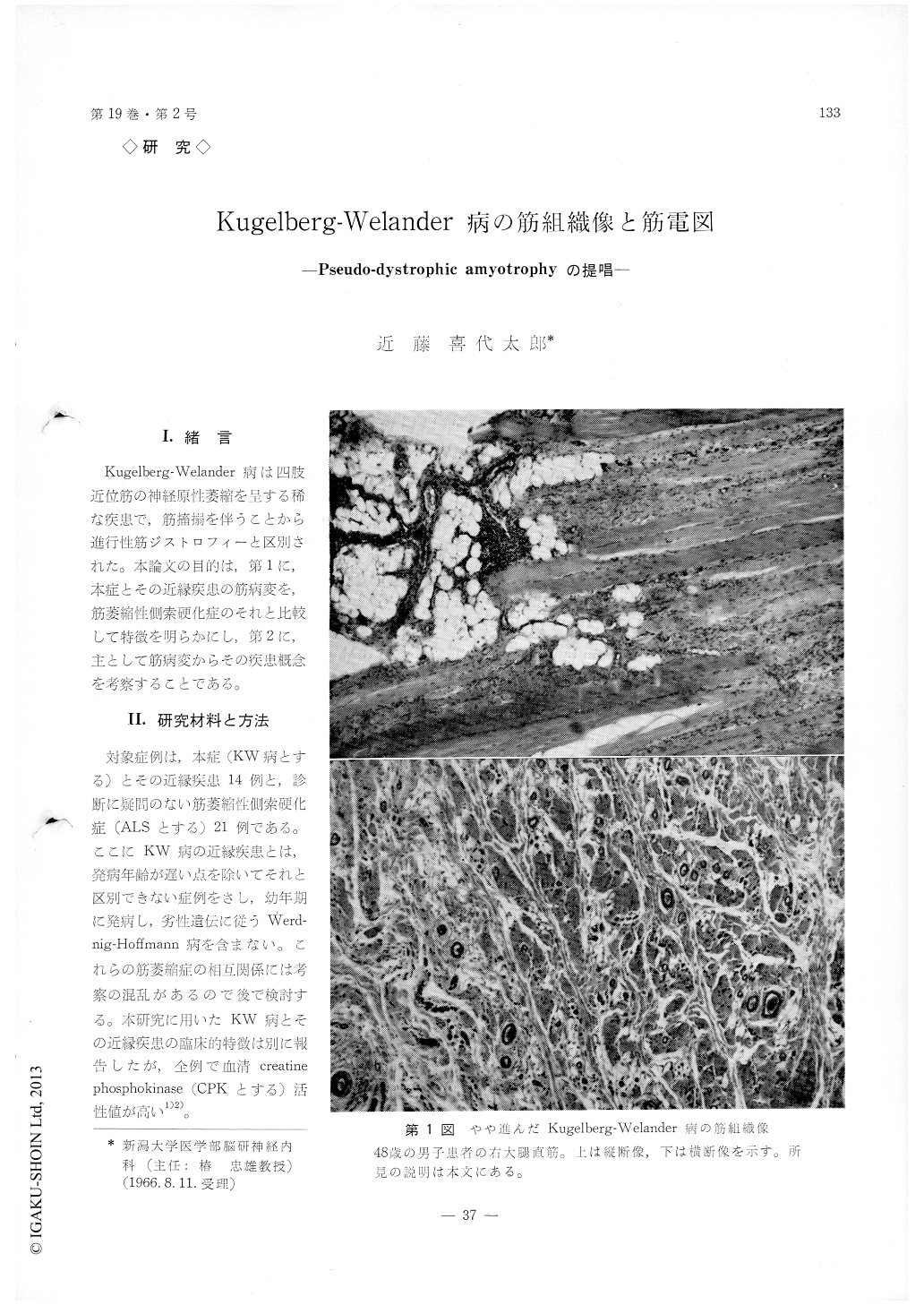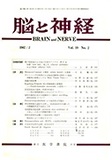Japanese
English
- 有料閲覧
- Abstract 文献概要
- 1ページ目 Look Inside
I.緒言
Kugelberg-Welander病は四肢近位筋の神経原性萎縮を呈する稀な疾患で,筋搐搦を伴うことから進行性筋ジストロフィーと区別された。本論文の目的は,第1に,本症とその近縁疾患の筋病変を,筋萎縮性側索硬化症のそれと比較して特徴を明らがにし,第2に,主として筋病変からその疾患概念を考察することである。
The nature of muscle involvement in hereditary proximal spinal muscular atrophy, or Wohlfart-Kugelberg-Welander's disease was studied and dicussed in this paper. The author had compared 46 atrophic muscles from 21 patients with amyotrophic lateral sclerosis (ALS) and 14 cases of afore-mentioned disease histologically and electromyographically. All cases of the latter disease showed moderately elevated serum Crea-tine kinase activity.
The histologic observation revealed large groups of small fibers suggesting neurogenic origin of the muscle involvement in the both disease. However it also disclosed in Kugelberg-Welander's disease features of myopathic changes which were almost negligible in ALS. The structure of more than 30% of all the primary fascicles were destructed. The internal nucleation in otherwise normal muscle fibers was seen at the ratio of 5-40% of normal fibers in the cross-sectional field in this disease. A lot of pathologic fibers of various types, endomysial lipomatoses as well as small cuffings of round cells were also seen.
The electromyographic changes in the both disease were compatible with neurogenic atrophy.
Although the histologic findings of Kugelberg-Welander's disease should be regarded essentially as denervation atrophy, it could not be accepted that it was entirely identical to that of ALS. The elevation of serum Creatine kinase activity, which is always whithin normal limit in ALS, might be considered in causal combination with myopathic features demonstrated histologically in all the cases of this disease.
It was suggested in the present paper that the nature of muscle involvement in this disease differed from ordinary neurogenic amyotrophy. The author have called it a pseudo-dystrophic or pseudo-myopathic amyotrophy.
Kugelberg-Welander's disease was separated appropriately from muscular dystrophy by means of muscle biopsy and electromyography, however this observation suggested a "pseudo-dystrophic", or partly myogenic character of the disease, which was conjoined with anterior horn lesion in still unknown manner. In this connection, this disease could also be called a pseudo-dystrophic spinal muscular atrophy.

Copyright © 1967, Igaku-Shoin Ltd. All rights reserved.


